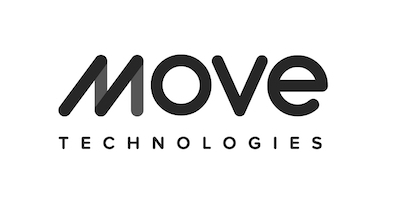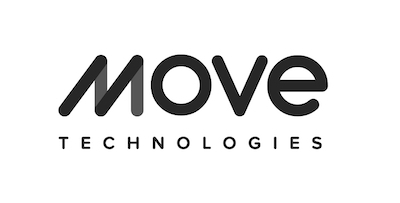It's actually a bit of a mystery. In health and fitness, the power of digital product design and the principles that inform it are still widely underestimated. This is mysterious because, at its core, health and fitness is about behaviour change. And, over the last couple of decades, the most powerful changers of behaviour have been digital products and platforms - Netflix, Facebook, Google, Amazon. Big tech's big names.
At Move, we use behavioural economics principles to inform elements of our digital design. Patterns of human behaviour that drive the decisions we all make.
This includes our consumer-facing marketplace product, but it also includes our operator-supporting technology and products like Virtual Studio.
In this article, we outline some of the key principles informing our current product design and explain how this helps operators engage and retain customers in more effective ways, as well as how the principles also open up new avenues for revenue.
Now, this is by no means an exhaustive list, but we zero in on the principles that matter most to the Virtual Studio, and those that make the biggest difference to operators’ bottom lines.
For behaviour to change, three primary levers are needed: motivation, ease and triggers. You need to provide incentives or make them clear and attractive; you need to make it as easy as possible for people to take an action; you need to prompt people at just the right moment with just the right information to keep those actions flowing in a cycle.
The collective effect of pulling these levers intelligently is helping some Move partners achieve retention rates as high as 79% during the pandemic.
Principle 1: ‘Investment and the Sunk Cost Effect’
What this means
The ‘sunk cost effect’ comes into play when an individual continues a behaviour or endeavour as a result of previously invested resources (eg time, money or effort).
For example, individuals sometimes order too much food and then overeat just to “get their money's worth”.
This is why subscriptions (or memberships) always have greater visit frequency and retention than pay as you go models: the user has already paid or consented to pay so the ‘sunk cost’ kicks in and motivation to use the product increases.
What this means for Virtual Studio from Move
Move Wallet
Knowing that they have already invested in the class and perhaps already have credit in the ‘bank’ too (Move Wallet is the feature that enables this credit bank), any hesitation on the customer’s part is minimised or removed entirely. The customer has already paid for/booked this activity, so their motivation to attend is higher, which in turn, of course, increases retention.
The ‘Book Again Nudge’
The ‘Book Again Nudge’ is the setup to repeat the cycle and reload the investment trigger. After completing a class, when the adrenaline and endorphin rush is at its best level (aka ‘motivational peak’), the customer is most likely to commit to booking again. So, they get a nudge in the form of a push notification or an action-response. The subscription and nudging are working together in a loop.
The 'book again nudge'
Has increased the number of customers rebooking by 36% for some Virtual Studio clients.
Principle 2: ‘Don’t make me think’
What this means
Originally published in 2000, Steve Krug’s Don’t Make Me Think was revised in 2014 to address mobile usability. Don’t Make Me Think is still considered by many to be an essential resource on user experience design thinking.
“Your goal should be for each page or screen to be self-evident, so that just by looking at it the average user can say - ‘I get it.’”
Clarity is critical.
What this means for Virtual Studio from Move
1-click login, 1-click invites
Virtual Studio allows a super simple 1-click login and invite so the user gets going straight away. Acquisition is therefore seamless and fast, and activation is optimised. Going back to the motivation/ease/triggers levers, here the ease is so high that the motivation doesn’t need to be in full effect.
It then saves the customer thinking time and effort by recommending relevant activities to them based on their profile, preferences and activity to date.
Smart defaults also support this in the cases where the user’s profile lacks sufficient data.
All of this means the customer gets to the activities they’re most likely to engage with as quickly and as smoothly as possible, taking things off their ‘thinking list’.
1-click Login and Invites
Have improved conversion by 300% for some Virtual Studio clients
Principle 3: 'Analysis paralysis'
What this means
Paralysis by analysis is what happens when someone finds a situation or decision too overwhelming or difficult.
Despite thinking over the circumstances or options, they’re unable to make a clear choice, often leading to no action at all.
In web design this can mean that the user is presented with too many choices related to their intended goal, unclear layouts and onward routes, or overly complex content. Netflix is a good reference here. Netflix doesn’t want the user to ‘search’ because that can delay engagement. Instead, it uses user history, preferences and trends to proactively propose content and exciting visual design to fast-forward engagement.
What this means for Virtual Studio from Move
Curated content carousels
Along with the type of features and functionality described in principle two, Virtual Studio offers curated content carousels on the Explore page. Clear, concise and relevant, these curated carousels are selected and personalised according to the user’s activity, their profile or what we know to be trending.
This saves the user thinking time and effort and allows them to engage quickly and with minimum friction.
Principle 4: 'Recognition over recall'
What this means
The big difference between ‘recognition’ and ‘recall’ is the amount of cues that can help the memory retrieval. Basically, ‘recall’ involves fewer cues than ‘recognition’. You have to do less brain work when recognising something.
So, in digital design this is about providing the right amount of information at the right moments, and that information should succinctly remind the user about their previous activity, saving the job of them having to remember, re-search, re-choose etc etc
Again, this is really about logic, simplicity and directness of design.
What this means for Virtual Studio from Move
Book again carousel
When Virtual Studio users return to their logged in version, they will be presented with a ‘Book again carousel’ which neatly encapsulates their probable preferred activities and obviously, what they’ve booked in the past.
They’re also able to ‘favourite’ activities and classes to populate that carousel and a longer favourites page.
In order for users to see connections between activities and be able to search the platform effectively and efficiently, activities are also given category tags. This increases the chances of users finding more classes they will enjoy and that are relevant to their needs and interests. The more classes they find successfully and attend, the more engaged they are and the longer their tenure will be, and the more valuable a customer they become.
Recognition over recall
The Book Again Carousel has driven 61.3% conversion for some Virtual Studio clients
50% of customers use favourites page when booking
Principle 5: 'Social proof'
What this means
Social proof (sometimes also known as “informational social influence”) refers to the tendency of people to follow the actions of others when making decisions. They place weight on these actions to assume what they’re doing themselves is, in fact, “the correct decision.” They are, in effect, self-validating.
Social proof can be used to deliver credibility to prospective and current users and promote adoption or acceptance in the design of digital products and services
What this means for Virtual Studio from Move
Customer reviews
Customer reviews provide a constant source of information and insight for both individual instructors and fitness operators. They help them learn, iterate and improve their offering.
But they’re also useful in other ways.
The reviews help users decide which classes and activities they are likely to enjoy and benefit from.
The strength of those reviews, how frequent and how positive they are also help Move decide which to promote on curated carousels and which to promote to relevant newer users.
On top of this, users can also see how many other users (like them) have favourited classes and activities - another clear signal that helps speed up and simplify their decision-making.
Social Proof
‘ X number of people favourited this’ text has lead to a 34.8% engagement increase for some Virtual Studio clients
These are just five examples of the behavioural economics and smart product design principles we apply and that operators can fully benefit from.
There are also at least 15 more not covered here (maybe we will cover those in a follow-up piece or two!).
Over the last 10 years of designing digital products, we’ve also invested literally $millions in testing and optimising these aspects and components. We know that combining this approach to design and service with the biggest variety of activities possible will keep people active for life, regardless of what else is going on in the world.
Find out more about Virtual Studio from Move



